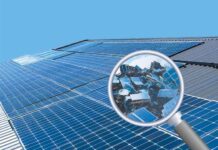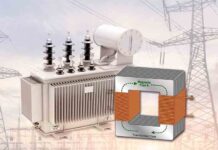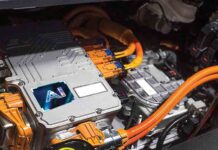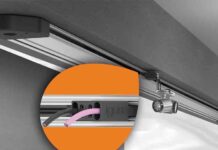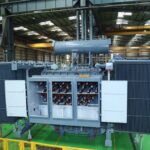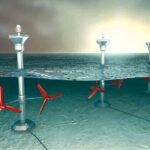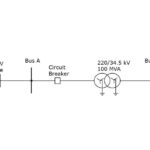
Insulated wires and cables are crucial in today’s world due to their ability to safely and efficiently conduct electricity, enabling various technologies and powering our daily lives. They ensure electrical safety by preventing shocks and fires, while also improving the performance and longevity of electrical systems. Their versatility allows for use in diverse applications, from powering homes, businesses and factories to enabling telecommunications and supplying power to various digital-age-specific equipment.
With our rapidly transforming technological environment, the necessity and demand for multiple types of insulated wires and cables is also growing apace. To be more specific, today, the growth of electric vehicles, advancements in telecommunications, and increasing demand for energy-efficient and fire-resistant solutions are creating a never-seen-before kind of demand for the high quality and environment-friendly insulated wires and cables. This situation is boosting the growth of the wire and cable insulation material market. Thus, the market of the materials for insulated wires and cables is also experiencing a rapid change in terms of quantity and quality. Let us now see what’s up there?
Growing demand of the cable & wire insulation materials
According to a report by the world’s leading market research firm, Research And Markets, “Electrical Wire and Cable Insulation Materials Market is valued at $12.90 billion in 2024 and is anticipated to grow at a CAGR of 5.36%, reaching $21.75 billion by 2034.”
The report also states that the electrical wire and cable insulation materials market is rapidly emerging as a vital sector addressing the growing demand for sustainable and high-performance insulation solutions, gaining traction across various global markets. As industries become more conscious of the environmental and safety implications of their choices, advanced insulation materials offer eco-friendly and reliable alternatives, ensuring superior protection against electrical interference and environmental damage. This shift is being driven by the increasing awareness and preference for durable and efficient materials, coupled with a desire for innovation and regulatory compliance.
As incidences of electrical failures and safety concerns continue to rise, there is a growing necessity for effective and safe insulation solutions that are free from harmful substances. Advanced insulation materials, with their ability to provide durable, high-performance alternatives without compromising on safety and efficiency, have emerged as a vital solution across applications such as power transmission, telecommunications, and industrial machinery. This market is witnessing significant growth due to the expanding focus on renewable energy projects and the growing trend of regulatory compliance, ensuring sustainable and reliable electrical systems.
According to the report, in the electrical wire and cable insulation materials market, challenges include high research and development costs and the complexities associated with sourcing sustainable and high-performance materials. Additionally, ensuring product safety and reliability while adhering to stringent regulatory standards adds further complexity to market entry and expansion. However, these challenges promote innovation and collaboration among manufacturers, material suppliers, and regulatory bodies, driving the development of more advanced insulation solutions and expanding their potential applications across various industries. This collaborative effort supports the growth of sustainable practices and enhances the overall efficiency and safety of electrical systems.

A few trends that are driving innovation in this field
Primarily the following trends in the insulated wire and cable market are collectively influencing innovation in the insulation material market:
- Renewable Energy: The increasing adoption of solar and wind power necessitates high-performance cables for transmitting electricity efficiently and reliably.
- Electric Vehicles (EVs): The growth of the EV market requires specialised cables for charging infrastructure, including those that can handle high voltage and power.
- Telecommunications: The deployment of 5G and the expansion of broadband networks are driving the demand for advanced insulated cables that can support high data transmission speeds and reliable connectivity.
- Energy Efficiency: There is a growing emphasis on energy conservation and reducing energy consumption, which fuels the demand for energy-efficient cables with improved insulation and reduced power loss.
- Fire Safety and Sustainability: Stricter building codes and regulations, coupled with increased awareness of fire risks, are boosting the demand for fire-resistant and halogen-free cables. Furthermore, there’s a push for environmentally friendly materials in cable manufacturing, including bio-based and recyclable options.
- Smart Technologies: The integration of sensors and smart technologies into cables is becoming more common, enabling real-time monitoring of temperature, load, and other parameters, enhancing safety and enabling predictive maintenance.
- Advanced Materials: The use of advanced materials like specialised polymers, improved elastomers, and fire-retardant compounds is improving the performance, durability, and safety of insulated cables.
Glimpses of the innovation in the insulation materials industry
Wire and cable insulation materials are experiencing significant innovation through the adoption of advanced polymers, eco-friendly materials, and nanotechnology. These advancements aim to improve performance, safety, and sustainability in various applications, including power transmission, telecommunications, information systems and industrial automation. A few trending materials and their applications are given below:
High-Performance Polymers
- Cross-Linked Polyethylene (XLPE): XLPE is a widely used material known for its excellent thermal and electrical properties, resistance to heat, chemicals, and water, making it suitable for both low and high voltage cables.
- Ethylene Propylene Rubber (EPR): EPR is another polymer that offers good insulation properties, especially in harsh environments and high-temperature applications.
- Silicone Rubber (SIR): Silicone rubber is favoured for its superior temperature resistance, flexibility, and sealing properties, particularly in high-temperature and high-voltage applications.
- Thermoplastic Elastomers (TPE): TPE is used for large gauge cables and communication wires.
- Enhanced Material Formulations: Modern insulation materials are being formulated with improved electrical properties, such as higher dielectric strength and lower capacitance, leading to more efficient power transmission.
Eco-Friendly Innovations
- Halogen-Free Materials: There’s a growing trend towards halogen-free cable insulation solutions, driven by regulatory requirements and the need to minimise harmful emissions during combustion.
- Biodegradable Materials: Biodegradable insulation materials are being explored for a more circular economy in cable production.
- Low-Smoke, Zero-Halogen (LSZH) Materials: LSZH materials are gaining popularity in eco-conscious construction and electrical projects.
Nanotechnology in Cable Insulation
- Nanocomposite Materials: Nanotechnology is being used to create nanocomposite insulation materials that offer superior thermal and electrical properties, reducing energy losses and improving overall cable efficiency.
- Ultra-Thin Insulation Materials: The trend towards miniaturisation is driving the development of ultra-thin insulation materials using advanced polymer blends and nanostructured materials.
Other Notable Innovations
- Customisation and 3D Printing: 3D printing technology is enabling the customisation of cables for specific applications, creating unique shapes, sizes, and properties.
- Self-Healing Materials: Self-healing cable materials are being developed to repair minor damages autonomously, reducing maintenance costs and extending lifespan.
- Longevity Design: Adding UV stabilisers and antioxidants to cable materials enhances their durability, extending their lifespan and reducing replacement frequency.
- Advanced Manufacturing Techniques: Improved extrusion and curing processes are enabling more precise control over insulation thickness and quality.
Biodegradable insulation materials are being explored for a more circular economy in cable production…
Conclusion
The wire and cable insulation materials industry is experiencing growth, particularly in areas related to infrastructure development, smart cities, and the increasing use of electronic devices. The industry is also seeing a shift towards more specialised materials that offer better performance in terms of flexibility, resistance to environmental factors, and safety standards.
Government investments in infrastructure projects, including smart cities, are driving demand for wires and cables, and thus their insulation materials. The development of smart cities requires extensive cabling for various applications, further boosting the market. The proliferation of electronic devices in households and businesses also contributes to the demand for insulated wires and cables.
As far as India is concerned, the ‘Make in India’ initiative, aimed at boosting domestic manufacturing, is also expected to increase the need for power cables and their insulation. A few recent innovations, as reported by the global management consulting firm IMARC includes: i) the launch of FinoUltra by Finolex Cables and ii) rolling out of the Flexi-TUF eB-HFFR Wires and eB+ Power Cables in Kerala by V-Marc India. Finolex Cables’ FinoUltra is a new wire range utilising Electron Beam (E-Beam) technology for enhanced safety, durability, and performance. These wires offer 75% higher current capacity, minimal smoke emission during fires, and resistance to pests, UV, and chemicals. This has been designed for demanding environments, such as malls and airports, and complies with global sustainability standards. V-Marc India’s Flexi-TUF eB-HFFR wires and eB+ power cables have been developed with eBeam technology to offer eco-friendly insulation, higher current capacity, and long service life.
The trend of innovation in the insulation material industry will continue keeping abreast of the emerging needs of the wires and cables industry.
By P. K. Chatterjee (PK)


